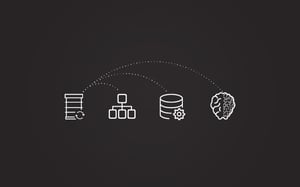The information age has brought with it a plethora of inventions and discoveries that have not only made our lives easier but better too. You’d only need to look at the advances in robotics or the progress achieved in the field of healthcare for proof. And that’s just two examples. In fact, there is no industry where technology hasn’t had an impact.
That includes the retail industry.
One particular example of innovation is the advent of planogram automation. We’ve already written about the topic in a previous blog article and how it can help your retailer business. In that piece, we focused more on how it works and why you should use it.
What we didn’t focus on in too much detail were the requirements needed to ensure that you make the most of your automation efforts.
Your data needs to be classified correctly
First up is data classification.
Considering that space planning automation is the first step to setting up your planogram, it’s important that the data you use is clean. In fact, it’s critical.
Here’s why: The process of data classification works on rules so that it can differentiate between products and understand which should be grouped together. Without the proper classification, you’re effectively placing products wherever you feel like putting them.
If your data has no hierarchy, then the software will be unable to provide you with an accurate representation of what you have grouped together. For example, if you only have a coffee category, the software will group everything together instead of separating it into beans versus ground or merchandising it from premium to economy.
The result is an uneven planogram built around the wrong data, which will ultimately affect your sales and impact your customer’s experience of your store.
Your planogram must be driven by data
It’s a fact: if you want your planogram to be effective, it needs to be driven by data. We’ve covered that already in a past blog article, where we focused on the importance of retail analytics for your planogram.
By using data for your planogram, it negates any bias towards a product. Let’s take an average retailer as an example. There may be a desire to disregard the items that sell well but deliver low returns in favour of higher-priced products which sell fewer units.
With planogram automation, while the software does allow for a balance between sales, units and cost of sales, there are rules that will prevent a space planner, or retailer for that matter, from giving more space to a product that they favour, which could be a low selling product.
You can’t argue with the data if it says a product should receive fewer facings than you want to give it. After all, if you go against a data-driven planogram, you are effectively preventing your store from pleasing your customers and maximising your sales.
You still need human ingenuity
As much as automation lowers the chance of human error when building your planogram, that doesn’t mean you should disregard a space planner.
There will always be the need for a person to be involved. This is simply because for all the good that software can achieve, it can’t formulate your category strategies on your behalf..
It also can’t understand that a supplier won’t necessarily provide support to a retailer and as such, not get premium space for a product. Or that certain brands are kept together even if they are completely different products.
That said, it does need to be noted that it’s a first pass at placing items on your planogram. Thus, it won’t be completely perfect. But that’s not the point.
The point is that planogram automation aids space planners to be more efficient in doing their job. Thus, a potentially five-hour job can be completed in five minutes if not less. And that includes making additional tweaks. Take away the human ingenuity completely, and you're left with an incomplete planogram, which won’t help you.
The benefits of space planning automation
If you’re a retailer, automation can provide you with a simplistic but accurate solution to assist you in determining how you should be laying out your store.
Let's look at the pharmacy industry for example. Most pharmacists employ an A to Z when it comes to space planning. Thus, you could have cough, analgesic, ointment, and allergy products all starting with the letter A in the first drop without any organised method as to how the general flow should be.
From a customer’s perspective, there would thus be no way to compare products within the categories since the basis of a category is products that are reasonable substitutes for each other.
However, in providing space planning automation, you can group the same products together so that your shoppers can compare each offering available and make an informed decision.
At the same time, it opens up a whole new world to you as a retailer as you can see how your shopper's shop, thus taking out any guesswork. This means you have the opportunity to offer the right products at the right time and in the right quantity.
Conclusion
Space planning automation is creating a new era in planogram generation. As you use it more frequently within your business, you’ll come to realise its worth. And then there is the fact that you’ll also know that it’s something that your retail business can’t do without.
Looking for advice or need a category management solution that can help your business? Visit our online store here for more information or book a custom exploratory consultation.


